Street Hustlers
We started the day by driving to the Coyocoan district. On the way when we were stopped at a red light a man was dressed as a clown with his son trying to get money from stopped cars. In Toronto it’s fairly common to see people with squeegees at red lights, but Mexico City takes people working for change at red lights to the next level.
In my time in Mexico City in addition to the aforementioned clown we saw a woman singing holding a mini amp to project her voice like she was in a eighties romantic comedy, a hoola-hoop girl who what hoola-hoops going simultaneously around both her legs, while standing on one leg, many versions of a guys selling snacks, and every variation of a person cleaning your car, including of course squeegee people.
In fact, we got forced into accepting a squeegee right after picking up the car rental. What can you do? I have to say though, he did a surprisingly thorough job. He did the driver’s side windshield, the passenger side windshield, and even the back window all within the span of a single red light. In Toronto I feel like they just do a poor job of wiping the driver’s side windshield before stopping.
Disappointment at the Frida Kahlo Museum
There was a big bustle outside the Frida Kahlo museum. We went to get in line to get a ticket, but we soon discovered the line of people already had tickets. Lizy went to talk to an attendant who told her there were no tickets until January 4th, but that maybe we could get resold tickets from some restaurant nearby.
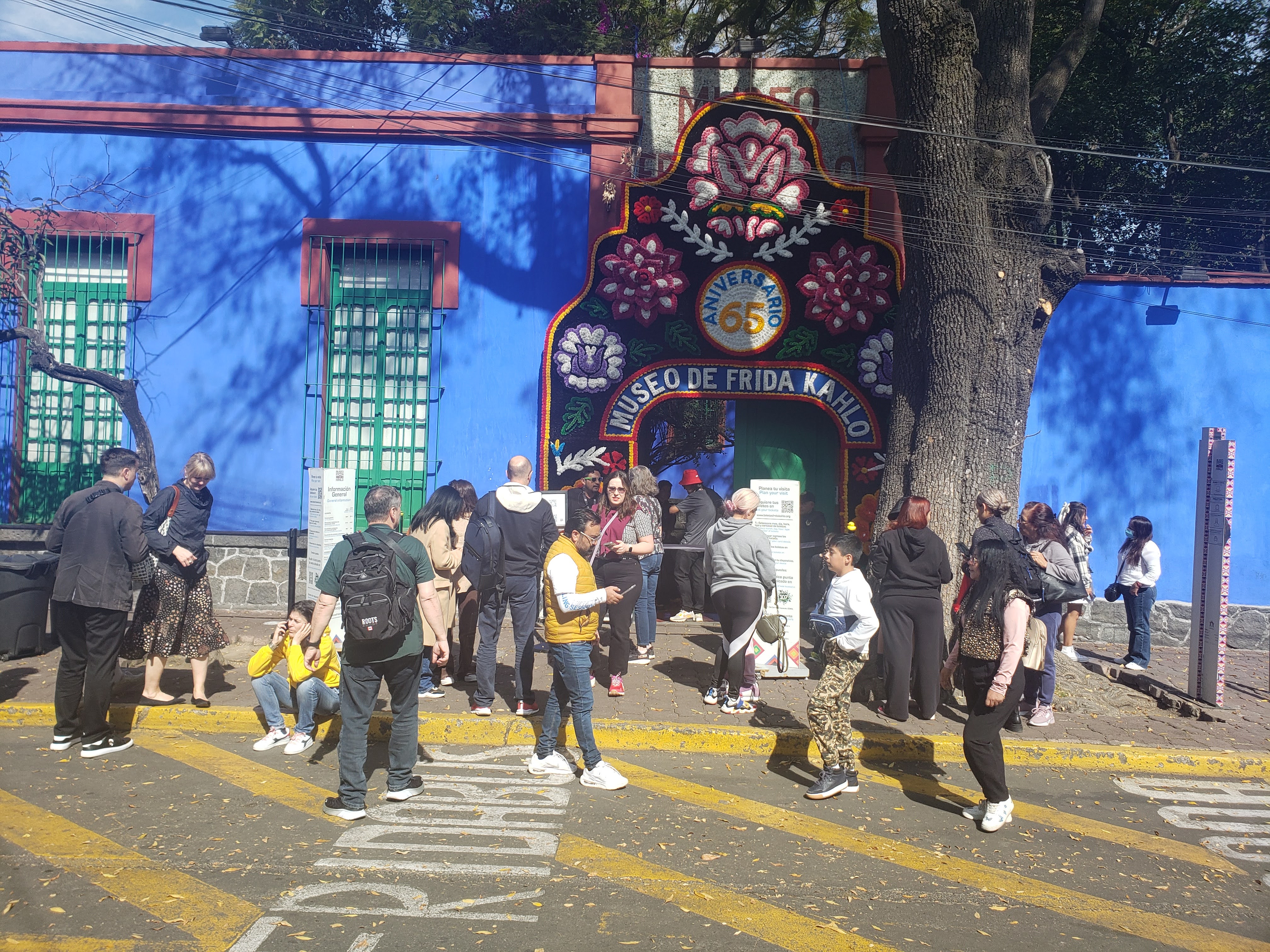
Lizy really wanted to see the museum. It was one of the things she was most looking forward to on the trip. She was really disapointed. I was disappointed too, but mostly becasue she was dissapointed, I didn’t really know who Frida Kahlo was. Lizy refused to give up and went looking for this restaurant that might have tickets. When that failed she tried to bribe tour guides to let us in. When that failed we finally gave up for the day.
Trotsky Museum
Since we couldn’t get into the Frida Kahol museum we walked over to the Trotsky museum instead. Trotsky was a Russian revolutionary who was exiled from Russia by Stalin, when Stalin became the leader after Lenin died. Trotsky lived his remaining years in Mexico until he was assassinated by a Stalinist agent. The museum consisted of the house he lived in, the guard house, and an additional modern building with artifacts.
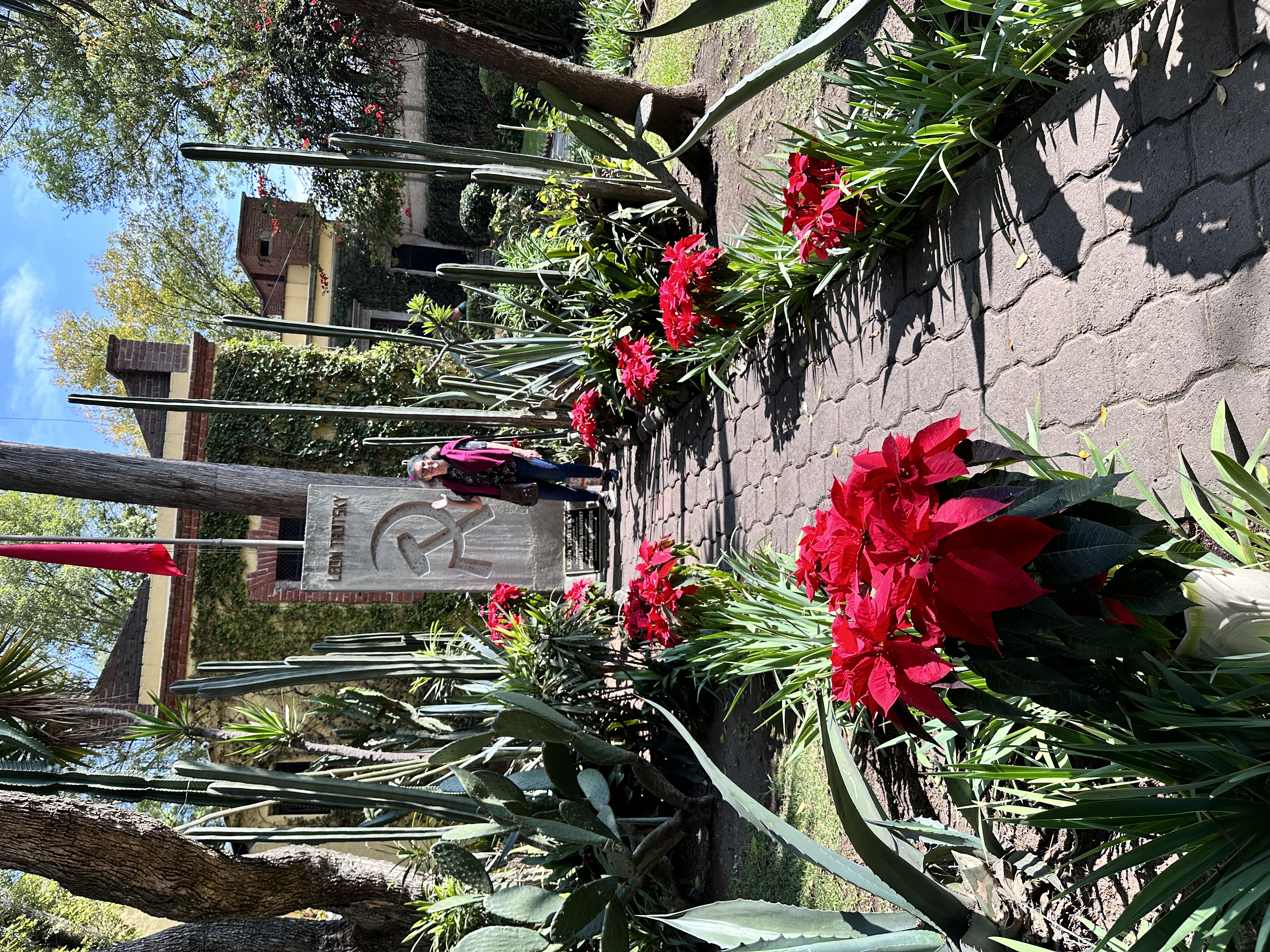
While we were walking around the museum I tried to get a sense of how much Lizy’s parents had learned about Trotsky during their education in Soviet controlled Poland. They both seemed to know almost nothing about Trotsky, which I attributed to Stalin erasing Trotsky from the history books. However, when I posed my idea to Andy, he said that people in Poland just didn’t care about Soviet history. So now I’m not sure what to think.
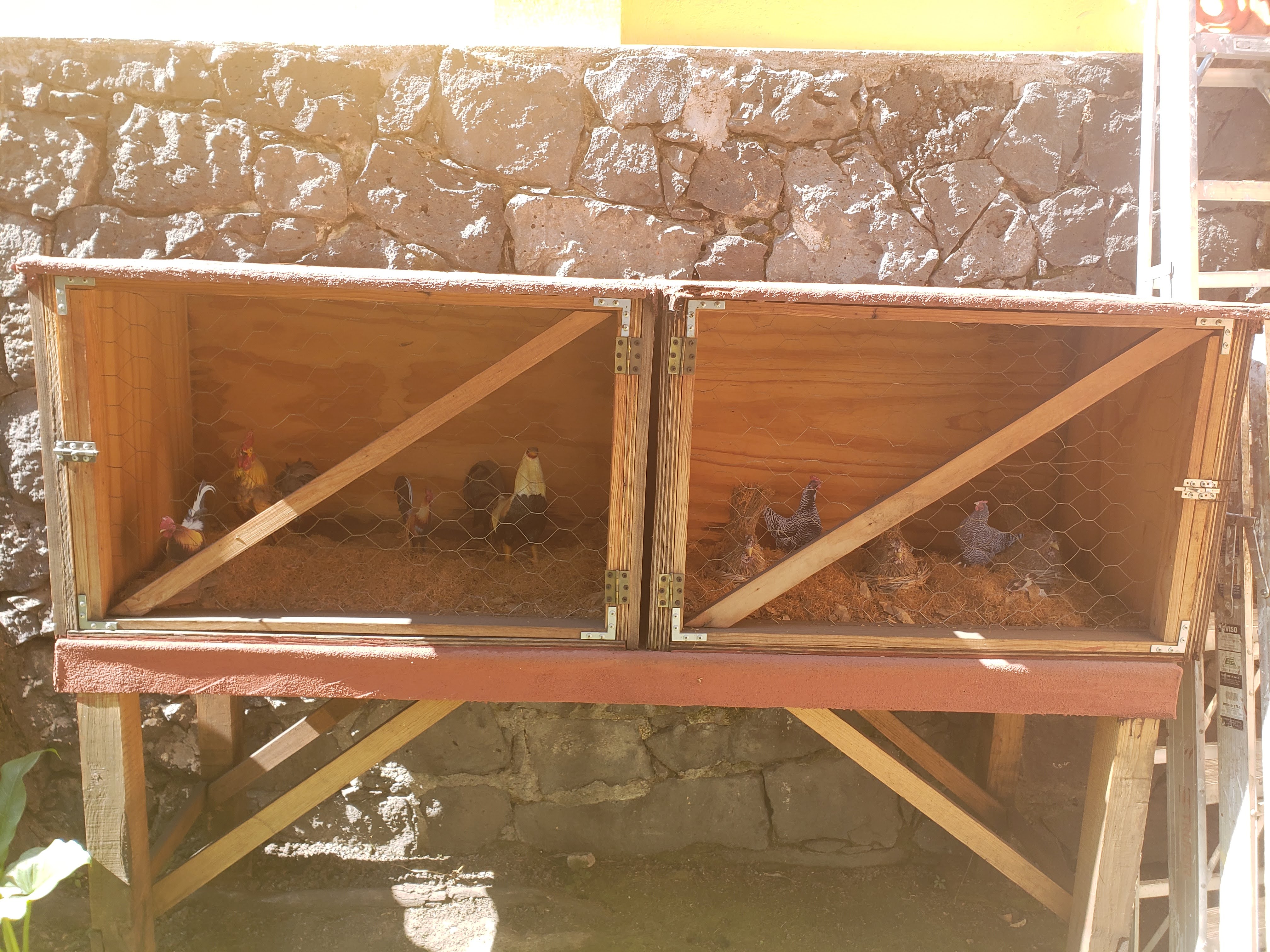
In the garden surrounding Trotsky’s house there were pens with plastic chickens and a cactus garden. Trotsky was apparently really into raising chicken and cacti while he was in Mexico. I think he liked to work as a peasant as a way of understanding the class struggle. Every once in a while he would bolt away from his work when an idea for a book came to him.
This made me think about how Communism in Russia was different than how Marx had originally envisioned by the fact that the revolution occurred before most of the villagers had become factory workers in the city. So the Russian revolution was more about land reform for peasants, than who controlled the factory (at least that’s my interpretation).
It’s also interesting to think that maybe this rural interpretation of Communism was tied up in Trotsky’s Judaism. The early communist zionists of eastern europe were also most interested in the agrarian aspects of Communism. They’re version of communism lead to the development of Kibbutzim in Israel. I wonder how Trotsky felt about the Kibbutzim. Did he feel a connection to the Jewish homeland? Did he think the Kibbutzim were a good implementation of Communism?
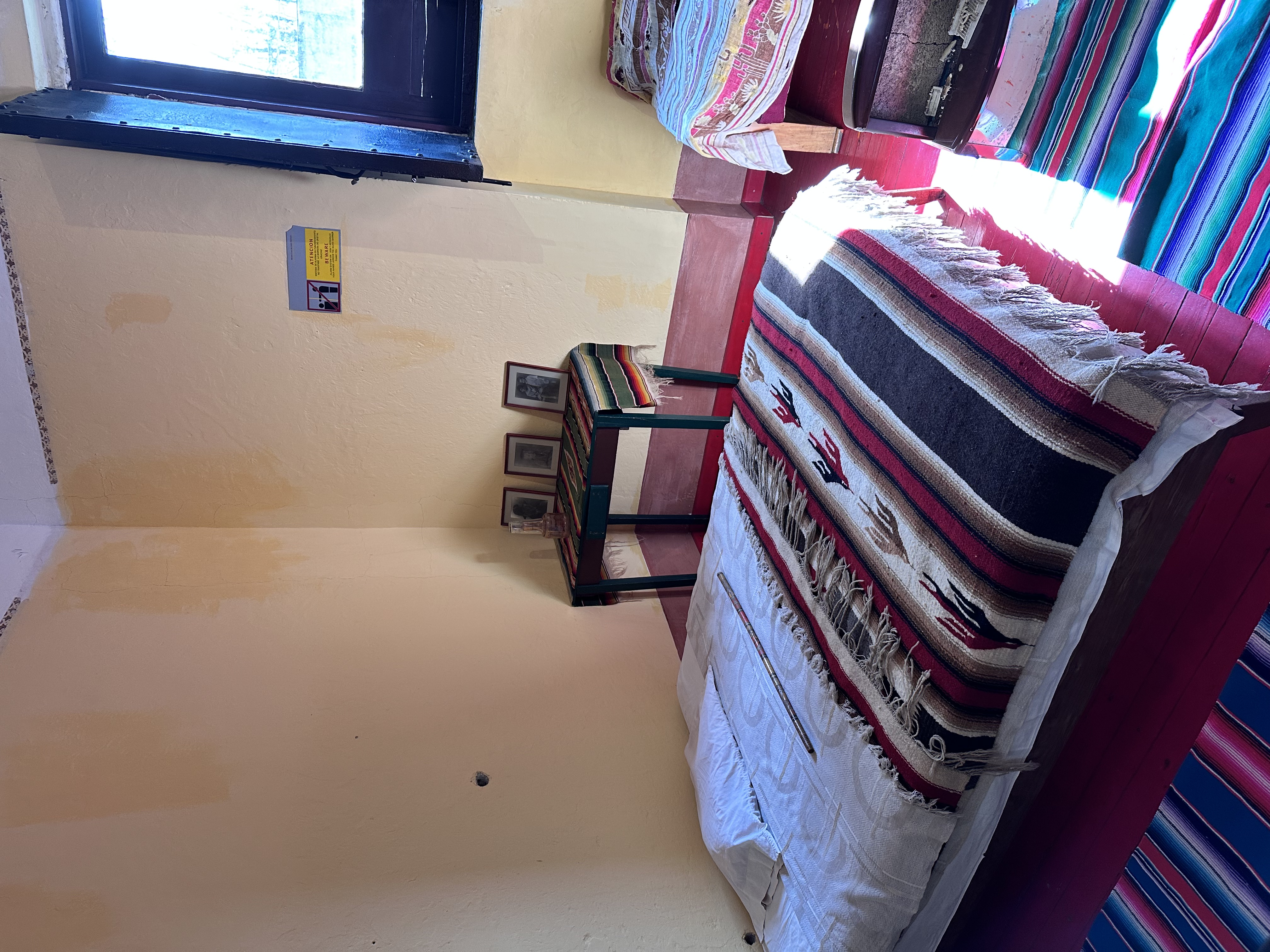
In Trotsky’s house we saw his study where he was supposed to have worked for ten hours a day until it became the location of his death. At the time he was writing a biography of Stalin to reveal his crimes. Perhaps, Stalin heard about the work and that’s why he made it a priority to have Trotsky killed.
Back in the new building with the artifacts, beside the trotsky stuff there was a hall containing a small art gallery. The art was contemporary surrealism. There was painting of a horse on fire falling into the sky, a man using a falcon taming mask on his son, and a young woman with a whimsical expression on her face at an amusement park, but in the reflection of her glasses was a hellish landscape.
Artisan’s Bazaar
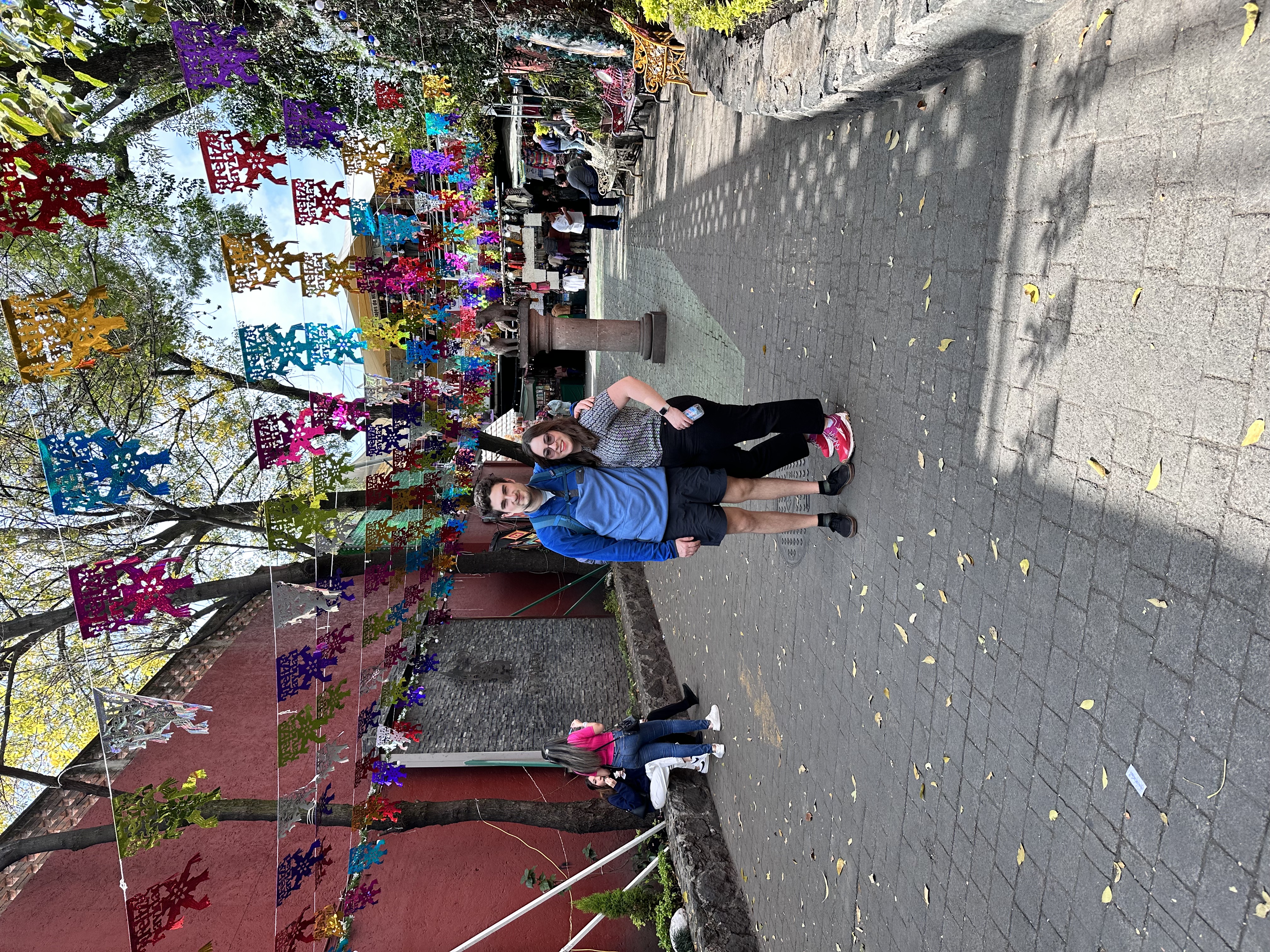
We went back to the car and drove to the main Cayocoan square. At the centre of the square there was a fountain with statues of two coyotes the icon of the neighborhood. Just off the square was the Bazaar Artezenal Mexican an enclosed two floor market filled with stalls selling all types of trinkets including jewelry, ceramic skulls, incense, tarot and tarot cards. I walked around the Bazaar a couple of times, but shopping tires me out and after not too long I convened to bench just outside the Bazaar to wait for Lizy and her parents. I opened up the book of John Stuart Mill on Bentham. He talked about the coldness of Bentham’s philosophy. How it could be used for the basis for making the laws of commerce more just, but didn’t really say anything for how people could achieve personal happiness. Or in my estimation to say this in another way you can curb the excesses of American capitalism with Bentham utilitarianism, but you can’t use it to create the American values in the first place.
Elizabeth came out second. We sat together and chatted. When Lizy finally came out of the bazar energized by the shopping, she chuckled at us waiting on the bench. She stole a photo of me yawning.
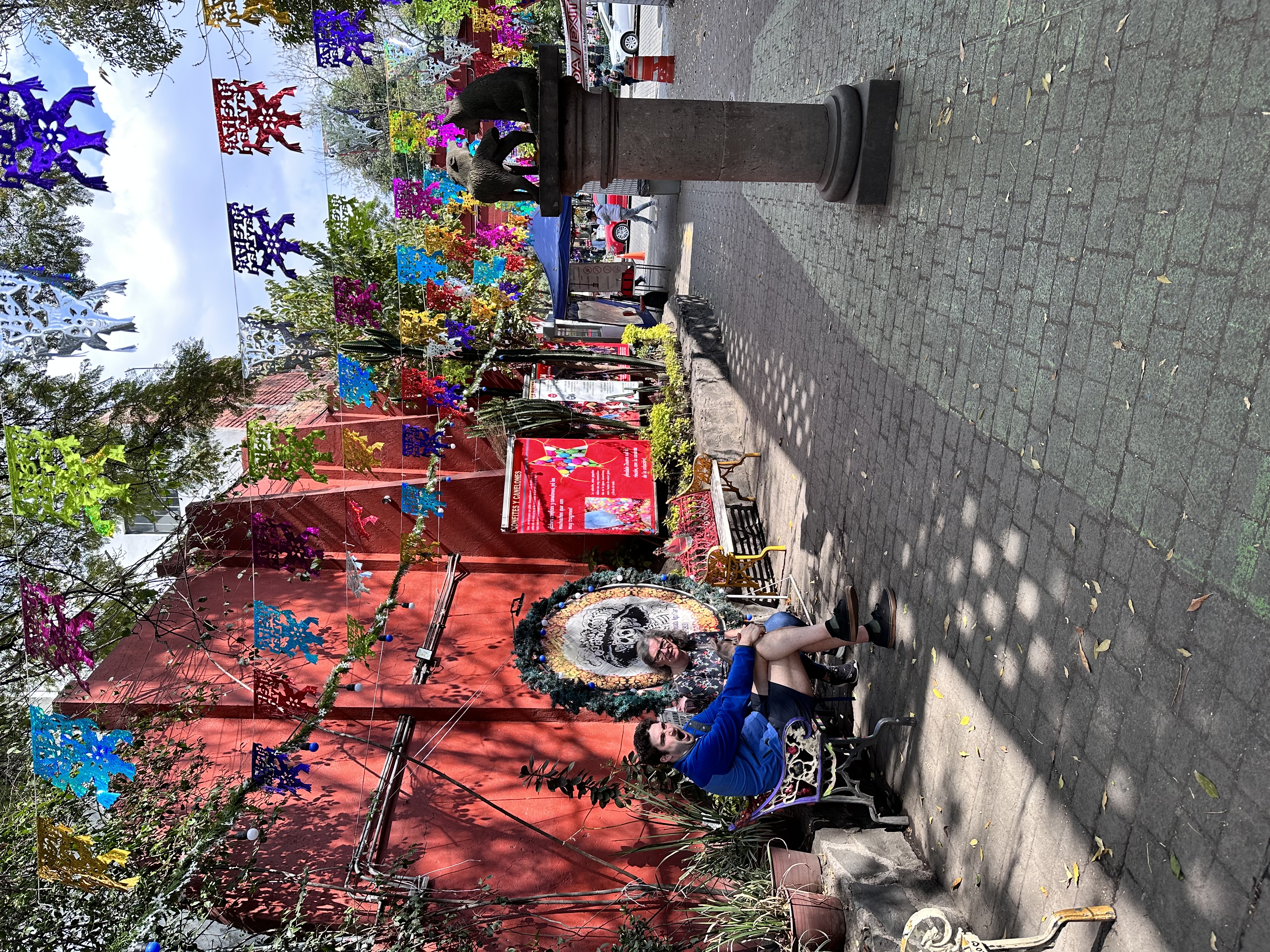
Cayocoan Square
After lunch, we walked around the main square and adjoining park area. Lizy kept getting tempted by people walking around selling blankets from Oaxaca. We walked into a the big church at the edge of the square. I found out later that it was one of the first buildings build by the Spanish in Mexico.
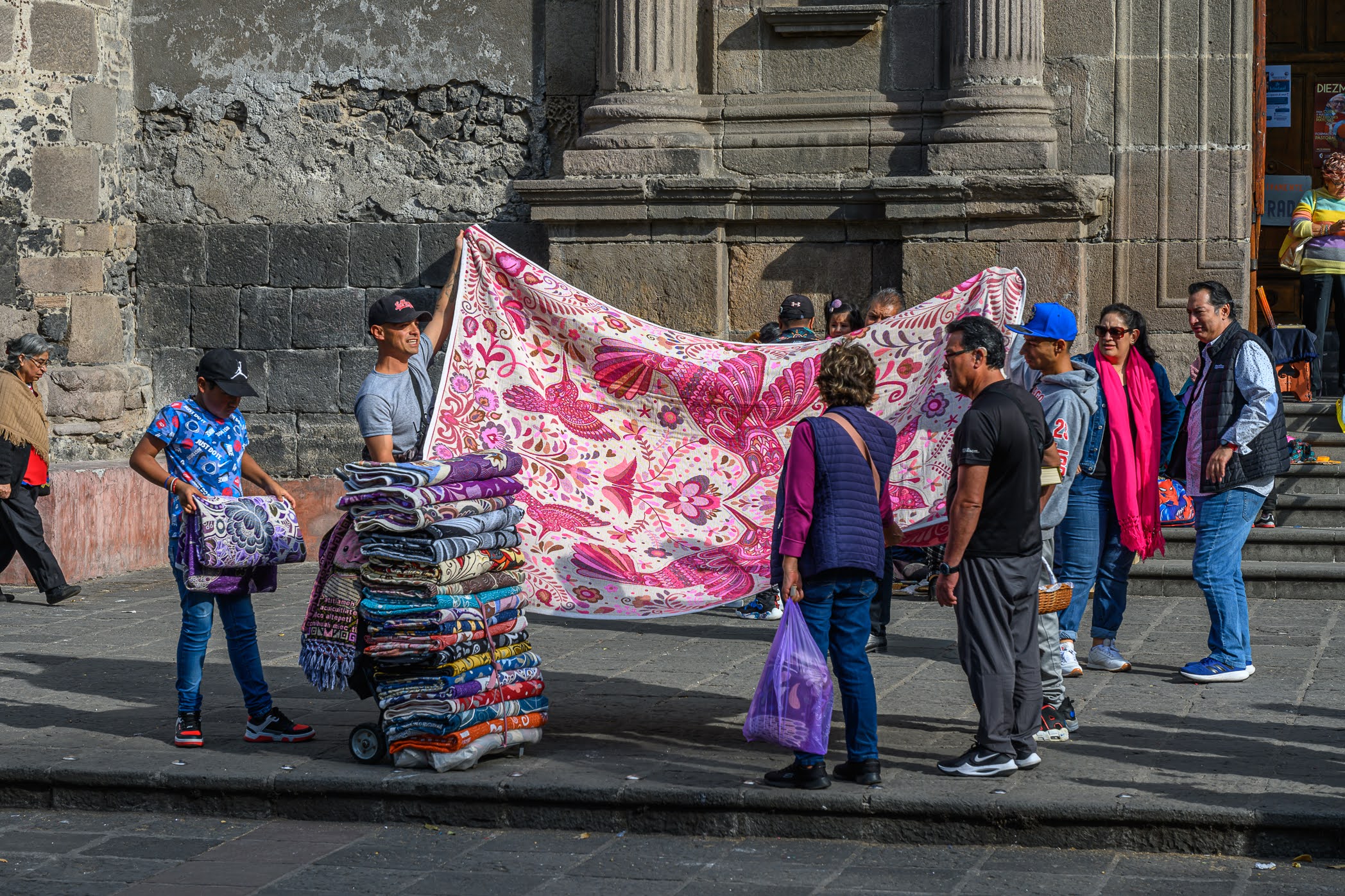
After Cortes conquered Mexico he made his first capital in Cayocoan. Only after the Aztec capital was dismantled did Cortes move his capital to the current location of Mexico City. Cayocoan remained a separate town until the 20th century when it was absorbed into Mexico City.
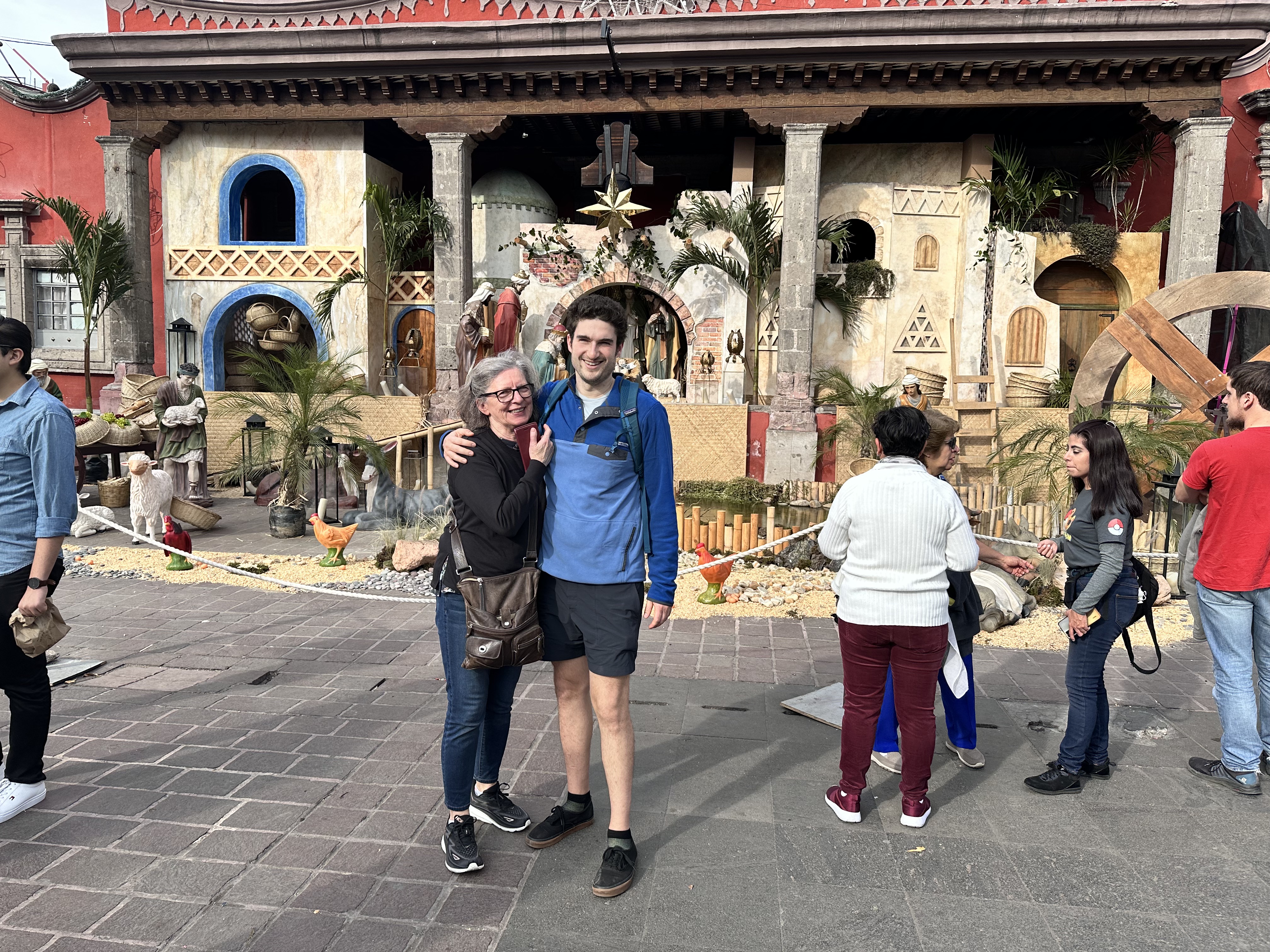
Inside the church was huge. I tried to be respectful while walking around since people were already kneeling for before Christmas prayers (maybe I’m not exactly sure how it works). Decorating the church were a series of paintings that seemed to tell the storey of a group of monks that had left Europe to spread the gospel. First they went to Egypt and told the Ottomans about christ. The Ottomans seemed to have reluctantly listened to the Monks in a respectful, but incredulous way. It was when they came to America and convened with the natives that they found their true calling. The natives were a receptive flock and in the final paintings the Aztecs are depicted as being baptized. They seemed to have founded a monastery, which I’m assuming was in the church we were currently inside.
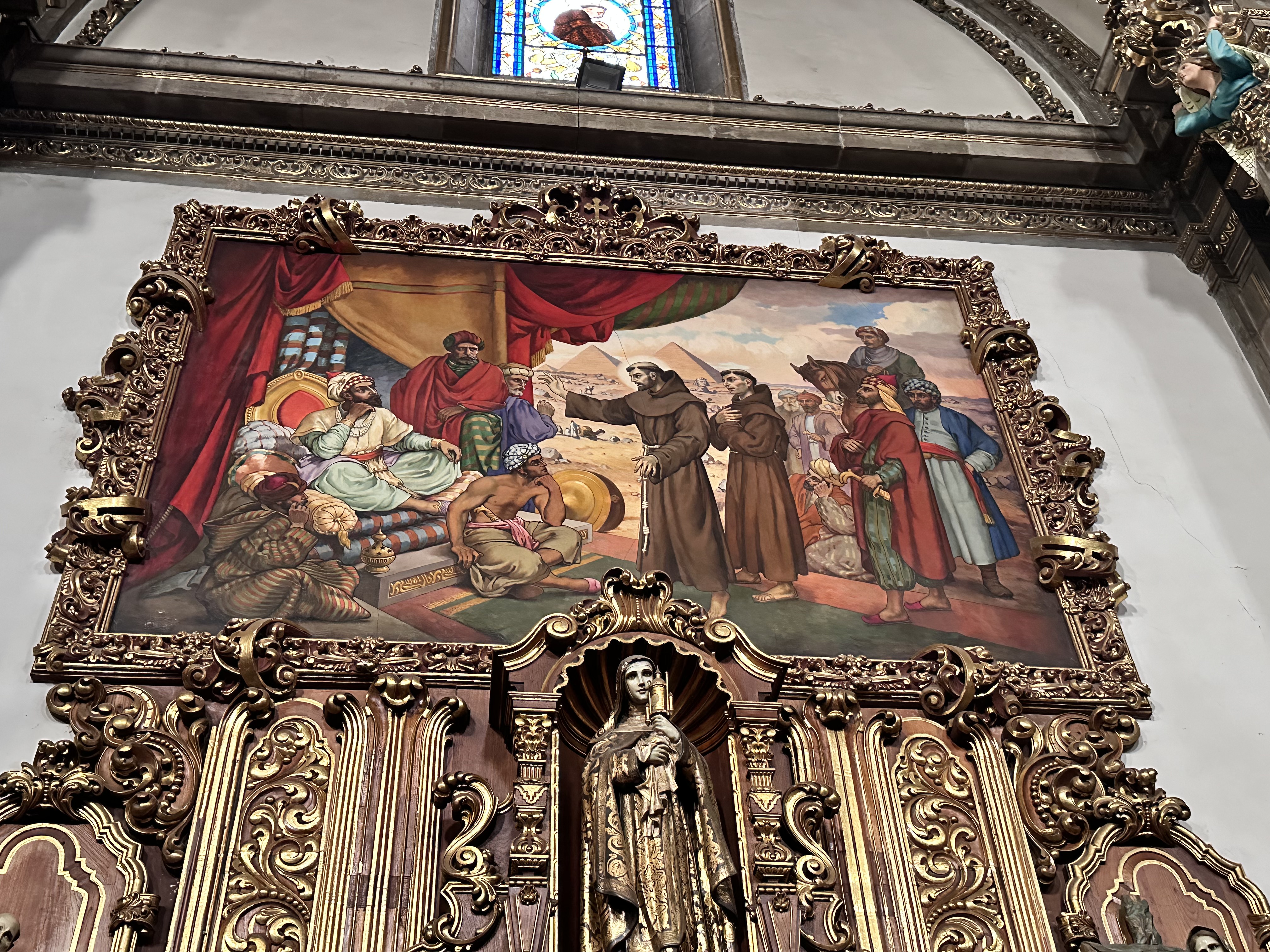
It’s interesting to see the monks portrayed so straightforwardly positively. I wonder what the contemporary view of Mexicans is of the colonial period.
Next, we walked behind the church down a narrow street filled with taquerias. At the end of the street was an abandoned looking building that my Moon travel guide claimed was the house that Cortes built for Malinche and their son to live in. Malinche was originally a slave. She was trafficked by the Aztecs to a village on the outskirts of the empire. When Cortes was first exploring mainland Mexico he came to the village and Malinche was given to him as a gift (or maybe he conquered the village). She quickly learned Spanish and became his main interpreter. She became instrumental in Cortes’s conquest of the Aztecs. She’s somewhat a mysterious figure. Some people see her as a traitor. I don’t think this is the correct interpretation.
Would any of us consider a black slave in the AMerican pre-civil war self a traitor if they ran away from their plantation to fight for the north? I think she has understandable motives to help Cortes and to even be happy seeing him conquer the Aztec Empire. Just because she looked more like the Aztecs, than the Spanish, doesn’t mean she should have some unearned loyalty to the empire that put her in slavery.
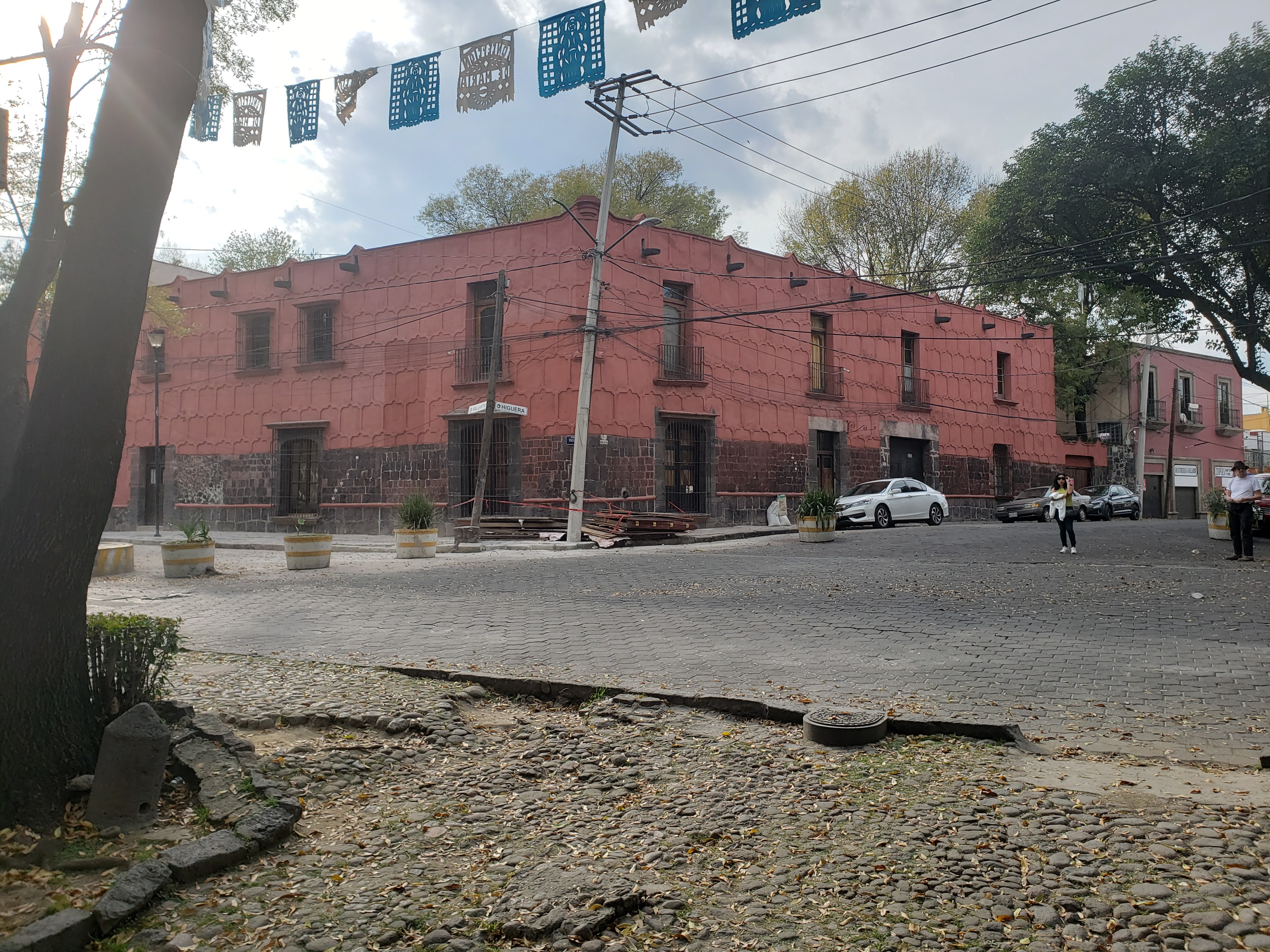
After or during the conquest she bore Cortes a son. She lived with her son in possibly the house I was standing in front of in the photo. There was nothing to mark the house as belonging to Malinche, but there was a small cafe across the street called Casa Malinche, so even if the government wasn’t capitalizing on the attraction at least some capitalist was.
Frida Kahlo Park
At the end of the street was a small garden named after Frida Kahlo. There was a statue of Frida with her husband Diego Riviero. Lizy and I mimicked their pose in a photo.
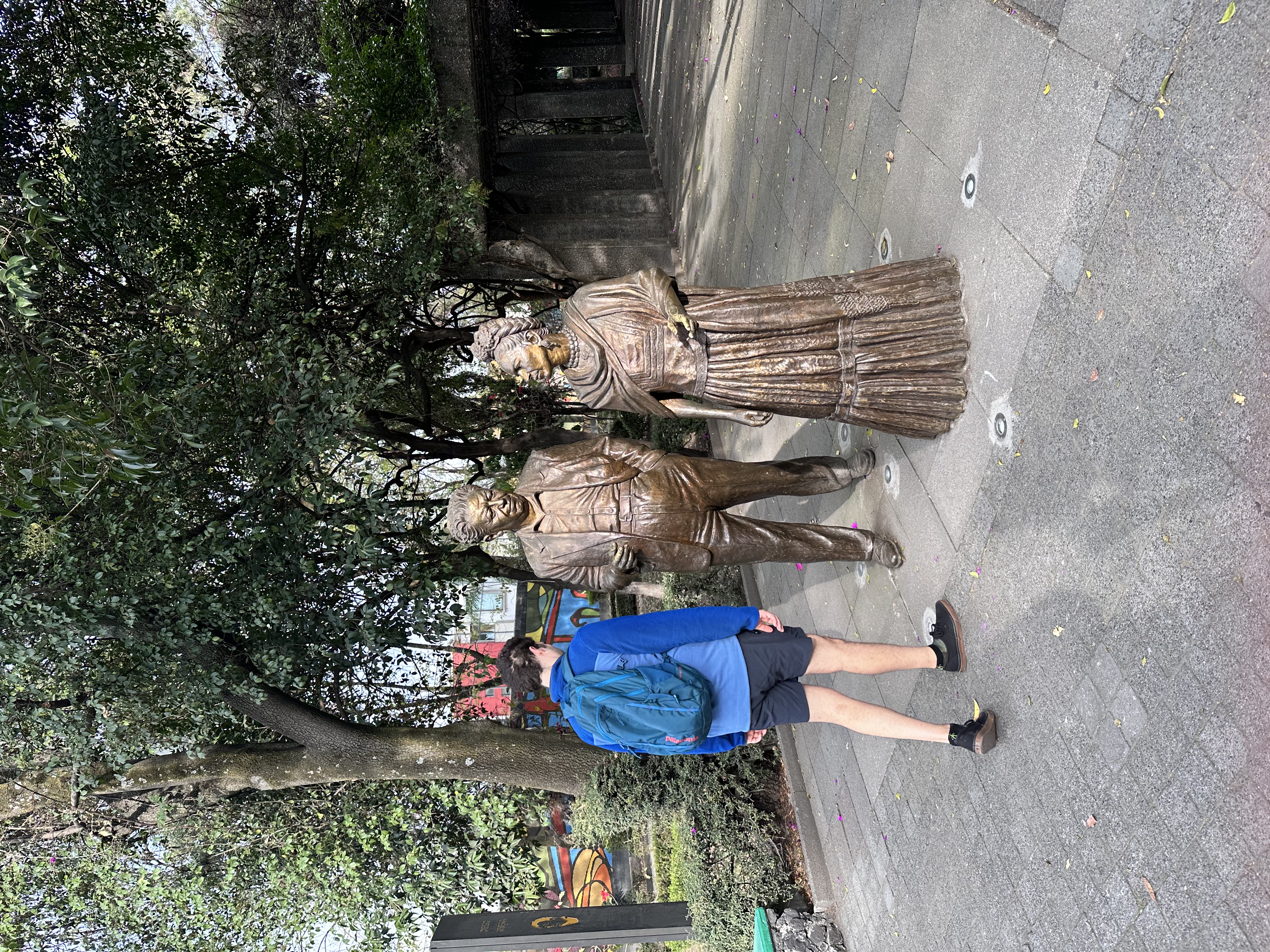
We walked back through the Cayocoan Square to get back to the car. All the stores were starting to close for Christmas Eve.
Going To the Gym
Back at the Condo Lizy and her Dad started watching Home Alone and I went down to the gym. There were many more people at the small gym, than I expected to be there on Christmas Eve. One guy was blasting a Drake album on his phone as if he was the only one in the gym. That’s the way some people are. That’s why we need people like Bentham to figure out how to curb the excesses of people like that. Luckily he left not too long after I got there and everyone else had the decency to wear headphones.
A Home Alone Marathon
When I got back to the condo Lizy and her Dad were half way through Home Alone. I fried up the skirt steak and vegetables that Elizabeth had prepped with a little bit of the one seasoning I had bought at Walmart. We ate the meat as fajitas with the black tortillas I had bought at the San Juan market the day before, while watching Home Alone 2. We finished the meal with more candied fruit. Elizabeth was laughing the hardest at the slapstick antics in the movie. She was the only one who had never seen the movie before. Lizy and her Dad always watched it during the holidays, while Elizabeth cooked. For once she had a bit of a break.